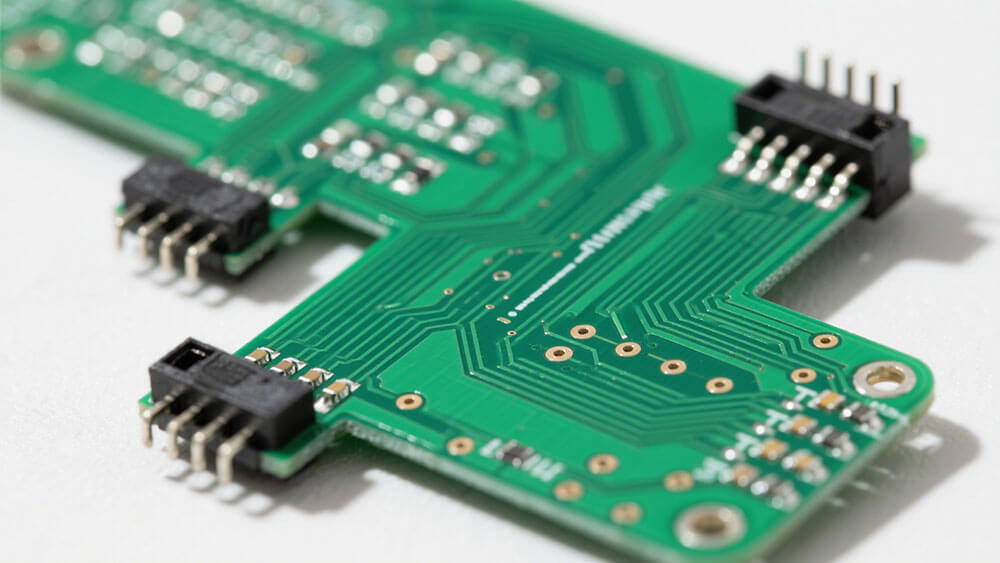
Voltage and lithium battery performance are closely intertwined, as voltage significantly influences the energy density, safety, and lifespan of lithium battery cells. For example, advancements such as silicon anodes can increase energy density by 30-40%. Proper management of voltage and lithium battery requirements is essential for maintaining stable charge cycles and mitigating risks such as overheating, ultimately improving battery efficiency and operational reliability.
Key Takeaways
Voltage impacts how well lithium-ion batteries work. Keeping the right voltage improves energy storage and makes batteries last longer.
Use a strong Battery Management System (BMS) to check voltage and stop overcharging or draining too much. This keeps batteries safe and reliable.
Managing temperature is very important. Hot temperatures can cause voltage problems, and cold ones lower battery power. Use systems to control heat and keep batteries working safely.
Part 1: Basics of Voltage and Lithium Battery Performance

1.1 What Is Voltage in Lithium Battery Cells?
Voltage in lithium battery cells refers to the electrical potential difference between the positive and negative terminals. It serves as a key indicator of the battery’s state of charge and overall health. Voltage is not static; it fluctuates based on factors such as temperature, load conditions, and the stage of the charge or discharge cycle. For instance:
High temperatures can elevate voltage, while low temperatures may cause a significant drop.
Light loads maintain stable voltage, whereas heavy loads can lead to temporary voltage dips.
During charging, voltage rises progressively, peaking near full capacity.
Understanding these variations is crucial for optimizing battery performance and ensuring longevity.
1.2 How Voltage Affects Energy Density and Output
Voltage directly impacts the energy density and output of lithium battery cells. Higher voltage levels allow for greater energy storage, which translates to increased capacity and output. However, operating at excessively high voltages can accelerate degradation, reducing the battery’s lifespan. Studies using electrochemical impedance spectroscopy have shown that voltage plays a pivotal role in forecasting battery performance. By analyzing a single impedance measurement before charging, you can predict future discharge capacities, highlighting voltage as a critical factor in performance optimization.
Additionally, the relationship between voltage and energy density varies with the battery’s chemistry. For example, NMC lithium batteries offer an energy density of 160–270 Wh/kg with a nominal voltage of 3.6–3.7V, while LiFePO4 batteries provide 100–180 Wh/kg at a nominal voltage of 3.2V. These differences underscore the importance of selecting the right configuration for your application.
1.3 Voltage Ranges in Lithium Battery Cells: Nominal, Maximum, and Minimum
Lithium battery cells operate within specific voltage ranges to ensure safety and efficiency. These ranges include:
Battery Type | Nominal Voltage (V) | Minimum Voltage (V) | Maximum Voltage (V) |
|---|---|---|---|
Lithium-Ion | 3.7 | 2.5–3.0 | 4.2 |
LiFePO4 | 3.2 | 2.8–3.2 | 3.6–3.8 |
LiPo | 3.7 | 2.5–3.0 | 4.2–4.3 |
Operating outside these ranges can lead to irreversible damage. For instance, discharging below the minimum voltage may cause capacity loss, while exceeding the maximum voltage increases the risk of thermal runaway. Proper voltage management, supported by advanced battery management systems, ensures that lithium battery cells remain within their optimal operating windows.
Part 2: Voltage Effects on Battery Lifespan and Safety

2.1 High-Voltage Risks and Degradation
Operating lithium battery cells at high voltage levels can significantly impact their lifespan and safety. When you charge a battery beyond its maximum voltage threshold, it accelerates chemical reactions within the cell, leading to degradation. This degradation often manifests in the form of lithium plating on the anode, which reduces the battery’s capacity and increases the risk of short circuits. Over time, this can compromise the battery’s performance and safety.
High temperatures exacerbate the effects of overvoltage, accelerating calendar aging and reducing the number of charge-discharge cycles the battery can endure.
Overcharging can trigger thermal runaway, a dangerous condition where the battery’s temperature rises uncontrollably, potentially causing fires or explosions.
Degradation tends to occur more rapidly in the anode than in the cathode, narrowing the safe operating area of the battery.
To mitigate these risks, you should ensure that the battery management system (BMS) in your custom battery pack design includes robust overvoltage protection mechanisms. These systems monitor the open circuit voltage and prevent the battery from exceeding its safe limits, preserving both capacity and safety.
2.2 Low-Voltage Risks and Damage
Low-voltage conditions can be equally detrimental to lithium battery cells. When a battery discharges below its minimum voltage, it can cause irreversible damage to its internal components. At very low charge levels, the voltage drop can lead to the growth of the solid electrolyte interphase (SEI) layer on the electrodes. This layer, while necessary for battery operation, can thicken excessively under low-voltage conditions, reducing the battery’s capacity and efficiency.
At very low charge levels, the battery may voltage drop to a level that can cause growth of the SEI on the electrodes. This voltage drop, which refers to a loss of electricity to internal resistance, can accelerate when the state of charge is low. Severe voltage drops can lead to the breakdown of some chemical components, resulting in irreversible capacity losses of 12-25% in lithium-based batteries when over-discharged across 1000 cycles (Zhang 2015).
To avoid these issues, you should implement safety features in your battery design that prevent over-discharge. A well-designed BMS can monitor the discharge rate and cut off the battery before it reaches a critically low voltage, ensuring long-term reliability and performance.
2.3 Temperature-Voltage Synergy
The interplay between temperature and voltage plays a crucial role in determining battery performance and safety. Temperature shifts can influence voltage behavior, affecting the battery’s energy density and overall efficiency. For instance, high temperatures can cause voltage to rise, increasing the risk of overvoltage-related damage. Conversely, low temperatures can lead to voltage drops, reducing the battery’s capacity and discharge efficiency.
Stage | Description | Voltage Behavior | Temperature Behavior |
|---|---|---|---|
II | Initiation of ISC | Voltage decreases with a rate > 10 mV/s | No significant change |
III | Thermal runaway stage | Voltage rapidly drops to 0 V | Rapid temperature rise, MTD calculated |
Understanding this synergy is essential for optimizing battery performance. You can achieve this by incorporating thermal management systems into your custom battery pack design. These systems regulate the battery’s temperature, ensuring that it operates within its optimal voltage range. By doing so, you can enhance the battery’s energy density, extend its lifespan, and improve its safety.
For businesses looking to develop efficient and reliable lithium-ion battery solutions, consulting with experts like Large Power can provide valuable insights. Their expertise in custom battery solutions ensures that your battery packs are designed to meet the highest standards of performance and safety.
Part 3: Voltage Management and Optimization Strategies

3.1 Role of Battery Management Systems (BMS)
Battery Management Systems (BMS) play a pivotal role in ensuring the optimal performance and safety of lithium-ion batteries. By continuously monitoring critical parameters, the BMS acts as the brain of the battery pack, maintaining voltage stability and preventing operational risks.
The BMS monitors voltage, temperature, and internal resistance of individual cells using advanced sensors. For instance, two heat sensors per cell provide real-time temperature data, enabling precise control over charging and discharging processes.
It actively manages the battery’s electrical Safe Operating Area (SOA) by regulating current and voltage. This ensures that cells remain within their optimal operating range, reducing the risk of overvoltage or undervoltage.
Flash Balancing Systems within the BMS operate at high power, achieving record balancing times. This feature ensures uniform voltage distribution across cells, enhancing the battery’s overall stability and longevity.
The BMS also calculates the State of Charge (SoC) and State of Health (SoH) with high accuracy. By measuring individual cell voltages, it provides precise data for efficient power distribution and load management.
Integrating a high-quality BMS into your battery pack design not only improves performance but also enables remote monitoring. This allows you to perform proactive maintenance, minimizing downtime and extending the battery’s lifespan. Research from the Ponemon Institute highlights that addressing battery failures promptly can significantly reduce operational disruptions.
3.2 Material and Design Optimization
Material and design optimization are critical for managing voltage and enhancing battery performance. By selecting the right materials and employing innovative design techniques, you can achieve higher energy density, improved efficiency, and better safety.
Evidence Type | Description |
|---|---|
Monitoring Technology | High-definition fiber optic sensors monitor temperature and deformation in lithium-ion cells. |
Sizing Tool Development | MATLAB-based tools optimize battery sizing for voltage and load requirements. |
Safety and Reliability | Advanced methods address safety challenges in large battery systems. |
For example, using high-definition fiber optic sensors allows you to monitor temperature and deformation with exceptional precision. This data helps in maintaining voltage stability and preventing thermal issues. Additionally, MATLAB-based sizing tools enable you to design battery packs that meet specific voltage and load requirements, ensuring efficient energy utilization.
Material optimization also contributes to better charging and discharging efficiency. Studies show that optimized materials can improve charging efficiency to 96.1% and discharging efficiency to 94.8%. These advancements not only enhance the battery’s capacity but also reduce computational time, making the system more responsive.
3.3 Safety Mechanisms
Safety mechanisms are essential for regulating voltage during extreme operating conditions. They protect the battery from risks such as thermal runaway, overdischarge, and internal short circuits.
Study Focus | Findings | Reference |
|---|---|---|
Overdischarge mechanisms | Highlights risks like internal short circuits (ISCr) and their resistance. | Maleki, H. & Howard, J. N. (2006) |
Thermal runaway analysis | Provides insights into voltage regulation under extreme conditions. | Feng, X. et al. (2014) |
Internal short circuit detection | Discusses early detection methods for ISCr to maintain safety. | Feng, X. et al. (2016) |
For instance, overdischarge can lead to internal short circuits, which compromise the battery’s safety and performance. By incorporating advanced detection systems, you can identify these issues early and take corrective actions. Similarly, thermal management systems regulate temperature, ensuring that the battery operates within its safe voltage range.
To further enhance safety, consider integrating robust safety features such as thermal cutoffs, pressure relief valves, and advanced insulation materials. These mechanisms work together to prevent catastrophic failures, ensuring the reliability of your lithium-ion battery packs.
For businesses aiming to develop custom battery solutions, consulting with experts like Large Power can provide valuable insights. Their expertise in designing safe and efficient battery packs ensures that your products meet the highest standards of performance and safety.
Voltage plays a pivotal role in lithium-ion battery performance, influencing energy density, safety, and lifespan. Effective voltage management strategies, such as AI-driven overcharging prevention and temperature regulation, extend battery lifespan by up to 40%.
Strategy | Impact on Battery Lifespan |
|---|---|
AI reduces overcharging risks | Improves lifespan by up to 40% |
Balances energy flow | Enhances efficiency and longevity |
Regulates battery temperature | Prevents overheating and energy loss |
Advanced charging protocols further optimize performance. Multi-stage constant current charging improves efficiency, while CC-CV methods balance cycle life and energy utilization.
Charging Protocol | Advantages |
|---|---|
Constant Current (CC) | Efficient charging, but may affect cycle life |
Constant Current-Constant Voltage (CC-CV) | Benchmark for efficiency and cycle life |
Multi-stage Constant Current | Improved charging time and efficiency |
By understanding voltage behavior and implementing best practices, you can design battery solutions that maximize reliability and efficiency. Large Power offers expertise in custom battery solutions to help businesses achieve these goals.
FAQ
1. How does voltage affect the lifespan of lithium-ion batteries?
Higher voltage accelerates chemical reactions, causing faster degradation. Lower voltage can damage internal components. Maintaining optimal voltage ensures longer battery life and better performance.
2. What happens if a lithium-ion battery is overcharged?
Overcharging increases the risk of thermal runaway, leading to overheating or fires. A Battery Management System (BMS) prevents overcharging by monitoring and regulating voltage levels.
Tip: Always use chargers with built-in safety features to avoid overcharging risks.
3. Why is temperature important in voltage management?
Temperature influences voltage behavior. High temperatures raise voltage, risking overvoltage damage. Low temperatures lower voltage, reducing capacity. Thermal management systems help maintain safe voltage ranges.
Tip: For professional guidance on voltage management, visit Large Power.




